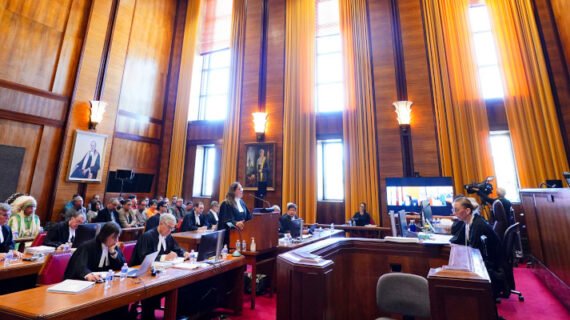- Alberta Premier Danielle Smith promised on Thursday that the province's proposed withdrawal from the Canada Pension Plan, in favour of a homemade solution, will result in lower rates and bigger benefits.
- Critics argued, though, that the Alberta Pension Plan proposal makes some optimistic assumptions that may not come to fruition.
- Nate Horner, Alberta’s president of Treasury Board and minister of finance, touted the reduced premiums that the province’s residents would enjoy under an Alberta pension plan.
Appearing behind a podium with the phrase “Your Pension, Your Choice,” Alberta Premier Danielle Smith promised that the province’s proposed withdrawal from the Canada Pension Plan, in favour of a homemade solution, will result in lower rates and bigger benefits.
But as Smith unveiled one of the key policies designed to get a “fair deal” for the province, critics argued the Alberta plan makes some optimistic assumptions that may not come to fruition.
In 2020, the Alberta government commissioned Lifeworks, an independent consulting firm, to examine the benefits of a potential new, independent pension plan for Alberta.
“According to their analysis, an Alberta Pension Plan could increase benefits for seniors, reduce premiums for workers, and protect the pension interest and benefits of all Albertans,” said Smith. “If we move from the CPP to an Alberta pension plan, that’s because hardworking Albertans have paid much more into the CPP than Alberta seniors get back in pension benefits.”
If Alberta withdrew from the CPP to create its own pension plan, Smith and other members of her government have said it could take $334 billion in assets with it. The CPP’s assets are currently valued at $575 billion. The justification for withdrawing the majority of the CPP’s assets is based on the idea that Alberta has some of Canada’s highest incomes per capita and labour participation rates in Canada.
All three prairie provinces are currently the only provinces in Canada where residents aged 65 and up, typically the age when pension benefits begin, are outnumbered by minors up to the age of 14. A senior official from the CPP Investment board has denied the calculation that Alberta would be entitled to the $334 billion it claims.
The share of assets Alberta takes from the CPP is a big variable in the new plan’s success, writes University of Calgary economist Trevor Tombe.
Tombe’s analysis of the proposal, which was independent of the report commissioned by the Alberta government, used a baseline of 20 percent of CPP assets going to Alberta. The potential contribution rates for Albertans would be 8.2 percent in that scenario, compared to the 5.9 percent contribution rate if Alberta received half of CPP’s assets.
Albertans won’t know the contribution rate until it becomes clear how much of the CPP assets will shift to the Alberta plan and that means the projected savings could be hundreds of dollars less than currently assumed.
Alberta would join Québec as one of the only two provinces in Canada to manage its own independent pension plan. Criticisms of an Alberta pension plan include the impact it would have on people periodically moving in and out of the province for work or otherwise, and it would result in disputes with provinces like Saskatchewan and Manitoba, which Smith addressed.
“That money would be portable, so employees would be able to move and work throughout other provinces and territories without disrupting their benefits, just as it is with the Québec provincial pension plan,” said Smith. “Alberta’s government would work with our partners in the Québec Pension Plan and the CPP so that whether you live in Alberta or move across the country, you would still receive your pension benefits with no disruption or decrease.”
Nate Horner, Alberta’s president of the Treasury Board and minister of finance, touted the reduced premiums that the province’s residents would enjoy under an Alberta pension plan.
“Right now under the CPP, the contribution rate for base benefits is 9.9 percent of pensionable earnings evenly split between employees and employers,” said Horner. ”In comparison, the report calculates that an APP contribution rate to provide the same level of benefits would be in the ballpark of only 5.9 percent, that’s up to $1,425 back into the pockets of each Alberta employee and employer every year.”
Horner said that under the Canada Pension Act of 1965, a province cannot withdraw unless it can guarantee the same benefits at the CPP. He said the province would not move forward without the approval of Albertans through a referendum.
Smith traced the report’s release back to 2019 when her predecessor Jason Kenney announced a panel to explore ways that Alberta could get a “fair deal” within Canada, especially regarding expanded autonomy on economic matters. It also included the possibility of a “made in Alberta” pension plan that was more fiscally efficient and from which Albertans would receive better benefits than they do currently under the CPP.
In the past, critics have warned that an Alberta pension plan could potentially see its projected low rates be hiked due to the province’s often volatile economy and smaller contribution pool. Alberta’s population is currently about 4.7 million, compared to 8.7 million in Québec, and 15.5 million in Ontario.




